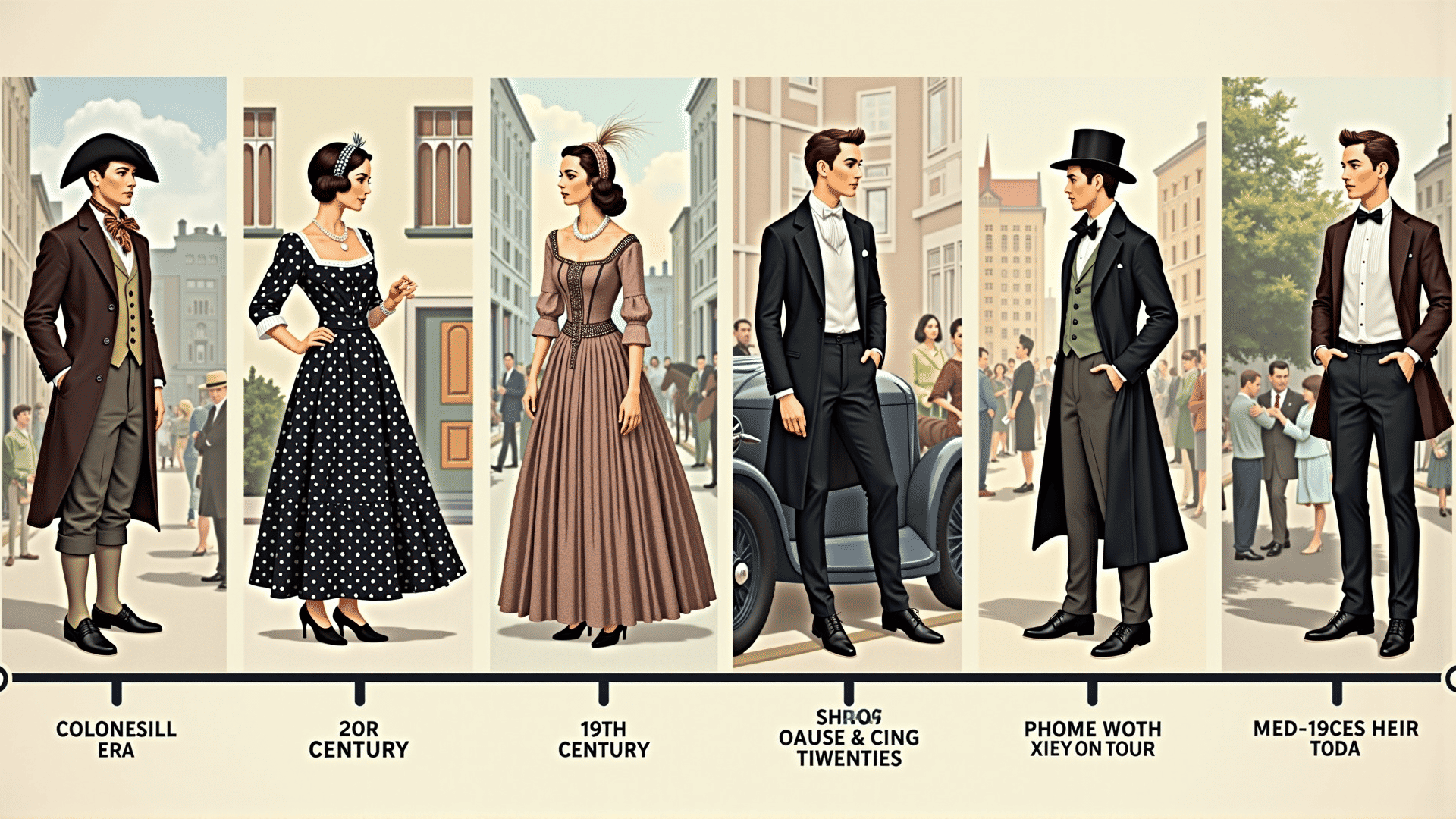American fashion has undergone a fascinating transformation since its inception, evolving through various societal shifts and cultural influences to become the diverse and dynamic landscape we know today. Tracing its journey from the colonial era to contemporary times offers a window into the broader cultural and historical contexts that have shaped the nation.
Colonial and Revolutionary Periods
In the early years of American history, clothing was primarily functional, reflecting the practical needs and Puritan values of the colonists. Garments were handmade from locally-sourced materials like wool and linen. The styles were heavily influenced by European fashions, yet they adapted to the availability of resources and the practical demands of frontier life. As the revolutionary spirit took hold, so did a distinctive American identity, subtly reflected in simpler, more austere clothing choices that symbolized a desire for independence from European aristocratic influence.
19th Century Transformations
The 19th century was a period of significant change, largely due to the Industrial Revolution, which introduced mass production and the use of new fabrics such as cotton. This era saw the expansion of fashion to include a wider audience, bridging class divides. The influence of European styles remained, but they were increasingly infused with American innovation and practicality. The introduction of the sewing machine in the mid-1800s revolutionized garment production, making fashionable clothing more accessible to the general population.
The Roaring Twenties and Post-War Shifts
The early 20th century brought about a dramatic shift in style as America entered the modern age. The 1920s flapper movement epitomized a break from tradition, with shorter hemlines and looser silhouettes symbolizing new freedoms for women. Following World War II, American fashion became more prominent on the global stage, with designers exploring new, bold directions. The creation of distinctly American styles, such as the T-shirt and denim jeans, reflected both a casual lifestyle and an entrepreneurial spirit.
The Countercultural Revolution
The 1960s and 1970s were defined by a countercultural movement that heavily influenced fashion. The youth-driven revolution embraced psychedelic colors, bell-bottoms, and eclectic patterns, embodying the era's spirit of rebellion and free expression. This period also saw the rise of influential American designers who would go on to challenge and redefine global fashion norms.
Contemporary Diversity and Global Influence
Today, American style is characterized by its diversity and global influences. It reflects the country's multicultural tapestry, blending elements from different cultures into a fashion landscape that values individuality. Modern designers and influencers often draw inspiration from varied traditions, creating a fusion that is uniquely American. The rise of digital platforms has further democratized fashion, allowing for rapid dissemination and adaptation of trends across the world.
In essence, the evolution of American style is a testament to the nation's dynamic social and cultural fabric. It mirrors the shifts in societal values, technological advancements, and global interactions that have shaped not only fashion but the very identity of the United States. Through the centuries, American fashion has maintained a dialogue with the past while constantly innovating, adapting, and looking to the future.
